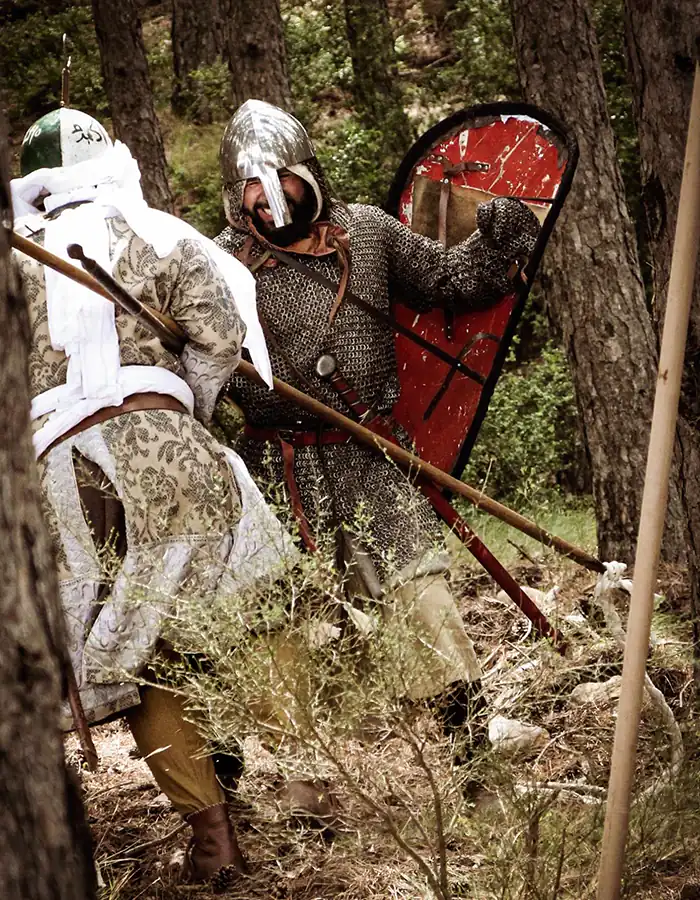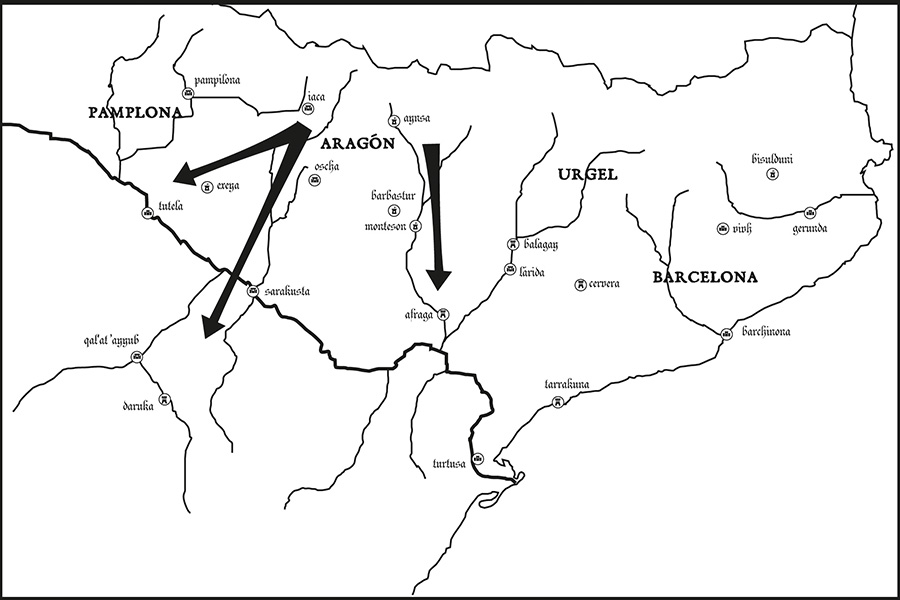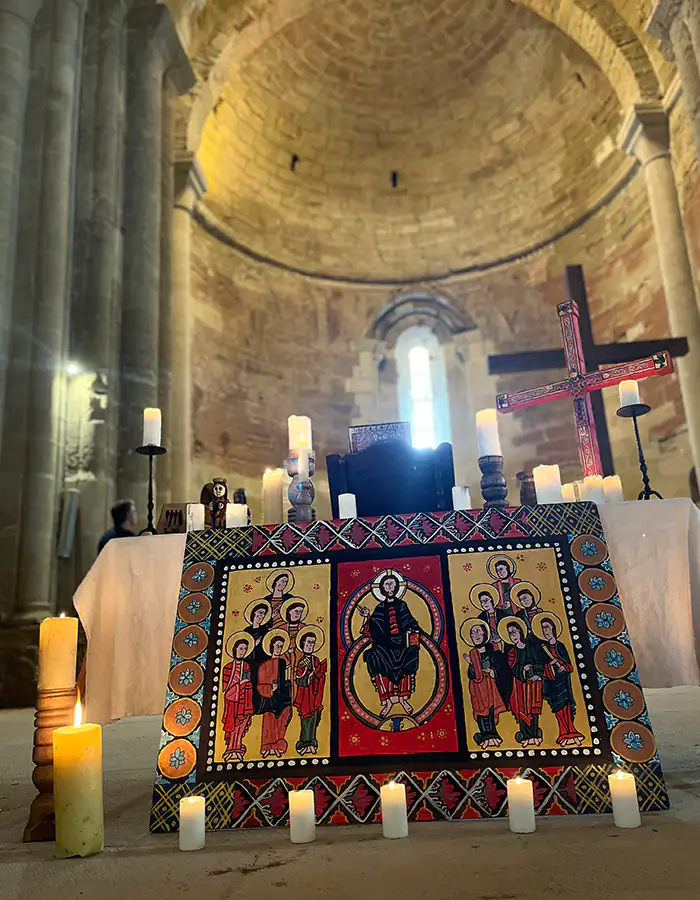The conquest of Upper Aragon
- WHome
- 9Conquest of Upper Aragon

The kingdom of Aragon
ROOTS IN THE 9TH CENTURY
After the death of Sancho III the Great of Pamplona, Aragon emerged as a kingdom under Ramiro I (1035-1063), his firstborn but illegitimate son.
He was the first monarch of the Kingdom of Aragon. During his reign, Ramiro I consolidated power in the region and expanded its territory.
One of his greatest achievements was the conquest of the city of Graus. His son Sancho Ramírez (1063-1094) succeeded him upon his death.
During his reign, he expanded the kingdom’s domains, furthering conquests along the courses of the Gállego and Cinca rivers.
Thus, he conquered the stronghold of Monzón in 1089 and built the castle of Montearagón to besiege the city of Huesca, where he died at its gates in 1094.
He also played a significant role in the Reconquista, collaborating with other Christian kingdoms such as Castile.
Castle of Montearagón
MUSLIM FORTRESS OR ADVANCED DEFENSE POST
This fortification was likely built during the Muslim domination of the region as part of the defense of the northern frontier of the Emirate of Cordoba.
The area was conquered by Christian forces led by King Sancho Ramírez of Aragon at the end of the 11th century.

Visit the castle
Montis Aragonis
a fortress
Under the reign of this same king and his son, Peter I, the castle became the most important fortified monastery in the kingdom, with a community of Augustinian regular canons, endowed with dozens of churches, smaller monasteries, and privileges, which led to conflicts with the newly reinstated bishopric of Huesca.
Text: Darío Español-Solana

